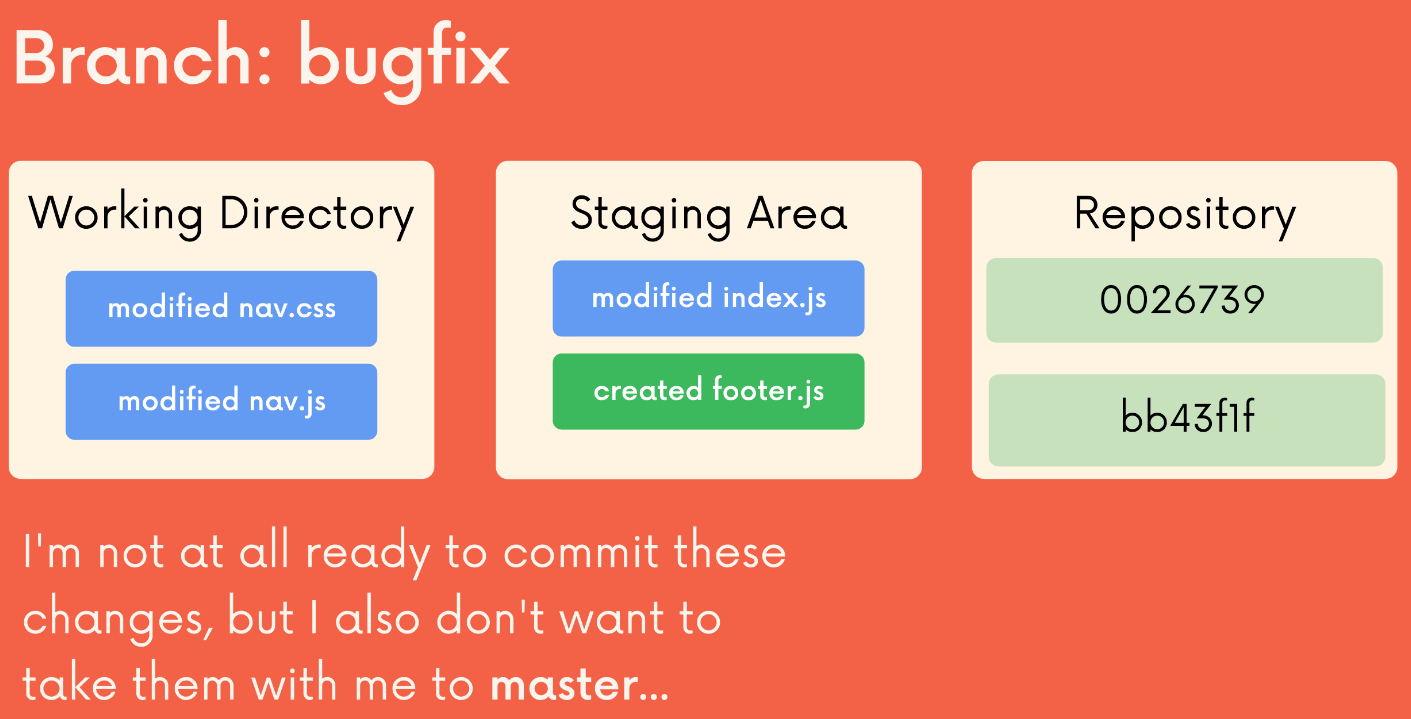- Not mandatory, but convenient!
- What happens if I have uncommitted changes on one branch and I switch to another?
- They follow along when you switch
- git won’t let you switch if there is a conflict between files
git stash- allows you to switch branches or pull the latest changes from the remote repository without losing your uncommitted work
- You can then apply these stashed changes back to your working directory whenever you’re ready
- Where the stashed changes are:
- The changes are removed from your working directory but are stored safely in that stash stack, which is global to your repository, not tied to a specific branch.
Example

 After doing some work on another branch, we return to our branch.
What can we do now:
After doing some work on another branch, we return to our branch.
What can we do now:
git stash pop
git stash apply
Multiple stashes
What if you make a new stack: (but ppl don’t really use it lol)
- Every time you run
git stash, Git creates a new stash entry and pushes it onto the stash stack. - Each stash entry is assigned a unique identifier, like
stash@{0},stash@{1}, etc., wherestash@{0}is the most recent stash. - You can see this with
git stash listgit stash apply stash@{1}